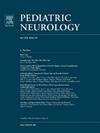Febrile Seizures, Ongoing Epileptiform Activity, and the Resulting Long-Term Consequences: Lessons From Animal Models
IF 3.2
3区 医学
Q2 CLINICAL NEUROLOGY
引用次数: 0
Abstract
Febrile seizures affect 2% to 14% of children. Prospective studies indicate that following a relatively prolonged febrile seizure there are long-term consequences. Although controlled experiments in children have ethical limitations, nonhuman animal models give us the ability to discover new phenomena, determine their mechanisms, and test treatments that can potentially translate to the human clinical population. Rat models of febrile seizures show two temporally distinct phases: (1); behavioral seizures and (2); ongoing epileptiform activity associated with hyperoxia. The behavioral seizures mimic those displayed by children including tonic-clonic convulsions and loss of postural control. Recordings show classic spiking discharges from cortical regions during the behavioral seizures. Following behavioral seizure termination electrical recordings in rodent models reveal that there is ongoing epileptiform activity that lasts longer than the duration of the behavioral seizures themselves. This ongoing epileptiform activity is also associated with hyperoxia—levels of brain tissue oxygen well above the normoxic zone (typical oxygen levels)—and can last more than an hour. When this hyperoxia, but not the epileptiform activity, is prevented in febrile rat pups the long-term learning impairments are also prevented. This leaves important questions unanswered, “Do children also have ongoing and long-lasting epileptiform activity and associated hyperoxia following termination of their febrile behavioral seizures and does this second phase have long-term consequences”? Here we discuss appropriate animal models of febrile seizures that replicate much of the human condition with special attention to the long-term effects of occult epileptiform activity following termination of a behavioral febrile seizure.
热性惊厥、持续的癫痫样活动以及由此产生的长期后果:动物模型的启示
2%到14%的儿童会出现发热性惊厥。前瞻性研究表明,相对较长时间的发热性癫痫发作会造成长期后果。尽管在儿童中进行受控实验存在伦理限制,但非人类动物模型使我们有能力发现新现象、确定其机制并测试有可能应用于人类临床人群的治疗方法。发热性癫痫发作的大鼠模型表现出两个时间上截然不同的阶段:(1)行为性癫痫发作;(2)与高氧相关的持续性癫痫样活动。行为性癫痫发作与儿童表现出的行为性癫痫发作相似,包括强直阵挛性抽搐和失去姿势控制。记录显示,在行为发作期间,大脑皮层区域会出现典型的尖峰放电。啮齿类动物模型在行为发作终止后进行的电记录显示,癫痫样活动仍在持续,持续时间比行为发作本身的持续时间更长。这种持续的癫痫样活动还与高氧有关--脑组织氧含量远高于常氧区(典型的氧含量)--可持续一个多小时。当发热大鼠幼崽的高氧(而非癫痫样活动)被阻止时,长期学习障碍也会被阻止。这就留下了一个重要的问题:"在发热行为发作终止后,儿童是否还会有持续和持久的痫样活动及相关的高氧症?在此,我们将讨论热性惊厥的适当动物模型,这些模型复制了人类的大部分情况,并特别关注行为性热性惊厥终止后隐性癫痫样活动的长期影响。
本文章由计算机程序翻译,如有差异,请以英文原文为准。
求助全文
约1分钟内获得全文
求助全文
来源期刊

Pediatric neurology
医学-临床神经学
CiteScore
4.80
自引率
2.60%
发文量
176
审稿时长
78 days
期刊介绍:
Pediatric Neurology publishes timely peer-reviewed clinical and research articles covering all aspects of the developing nervous system.
Pediatric Neurology features up-to-the-minute publication of the latest advances in the diagnosis, management, and treatment of pediatric neurologic disorders. The journal''s editor, E. Steve Roach, in conjunction with the team of Associate Editors, heads an internationally recognized editorial board, ensuring the most authoritative and extensive coverage of the field. Among the topics covered are: epilepsy, mitochondrial diseases, congenital malformations, chromosomopathies, peripheral neuropathies, perinatal and childhood stroke, cerebral palsy, as well as other diseases affecting the developing nervous system.
 求助内容:
求助内容: 应助结果提醒方式:
应助结果提醒方式:


